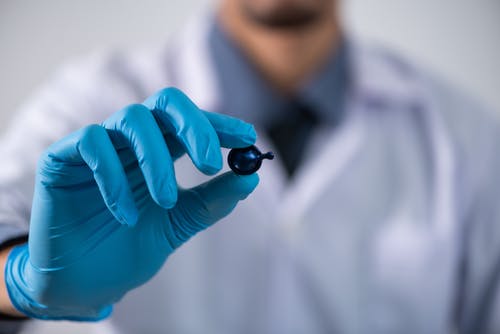Diagnosis of Chronic Bacterial Prostatitis
Date:2019-12-27 click:0

For chronic bacterial prostatitis, in addition to its clinical symptoms, more importantly, its diagnosis needs to be based on the following tests.
1. Examination of prostatic secretion (EPS)
It is one of the important bases for the diagnosis of prostatitis, and it should be performed under the condition of a negative urine examination. Under normal circumstances, the number of leukocytes in EPS was less than or equal to 10 / HP, and lecithin bodies were evenly distributed in the whole field of vision. When the number of leukocytes is more than 10 / HP and the number of lecithins is small, it has diagnostic significance.
Leukocytosis is the main index of inflammation diagnosis. Macrophages with phagocytic lecithin bodies or bacterial fragments in the cytoplasm of leukocytes are unique manifestations of prostatitis. These pathogens can be detected in EPS when there are bacteria, fungi, trichomoniasis and other pathogens in the gland.
2. Prostatic secretion culture
However, when the number of bacteria is small, it is not easy to be observed, and the results of bacterial localization culture can only be based on the prostatic secretion to get a conclusion.
A small number of Gram-negative bacteria are fragile, and if the symptoms are not severe, it is impossible to determine whether there is a bacterial infection when they are rechecked after the antibiotics have been given. So it should be determined if it's a bacterial infection before using antibiotics.
The prostatic secretion was collected by massage and cultured in the medium. In the case of chronic bacterial prostatitis, a large number of bacteria can be found in the culture medium, including Escherichia coli, Enterococcus, and Staphylococcus aureus. However, it should be noted that the negative ones may be caused by improper culture method or intermittence of bacteria discharge from the prostate.
3. Midcourse urinalysis
After centrifugation and precipitation of the middle urine sample, take the sediment and put it under the counting microscope to count the cells, and culture the cells. The mid-course urine examination represents the condition of the bladder, and there may be more leukocytes in urinary tract infection or acute prostatitis.
4. Ultrasonic examination
Transrectal prostate ultrasonography (TRUS) is of great value in the diagnosis. A high-frequency probe can clearly show the internal structure and overall shape of the prostate, correctly judge whether there is a nodule or not, and show the condition of seminal vesicle or ejaculatory duct.

The glands showed different ultrasonic signs, for example, high-density and medium-density echo indicating amyloidosis and fibrosis, no echo indicating inflammation, light spot echo indicates calcification or calculus. However, ultrasound is a lack of specificity in the diagnosis of chronic prostatitis and has a poor correlation with clinical symptoms, so it is not included in the routine examination.
5. Prostate biopsy and bacterial culture
If a definite diagnosis can be made by a general method, the examination can not be considered. It is advised to be used only when a few prostate nodules are large or need to be differentiated from prostate cancer.
However, for recurrent prostatitis, especially when the routine examination of prostatic fluid is negative, a prostate biopsy can be performed, and the specimens are respectively cultured in bacteriology and examined in histology. It has been reported that 25% of biopsies have pathogenic bacteria, and Staphylococcus albus is the most common.
6. PCR examination
Because there are many pathogens causing prostatitis, and most of them are difficult to cultivate, the detection rate is relatively low, and PCR has high sensitivity and specificity, so it has an important practical role in the physical examination of prostatitis pathogens.
Especially for gonococcus, mycoplasma, chlamydia, and other infections of prostatitis, as long as a little prostatic fluid can be detected quickly, so it has an important guiding significance for clinical selection of drugs. If the patient's prostatic fluid culture is negative and the efficacy of antibiotics is not good, this test can be carried out to identify the pathogen and guide the medication.
You may also be interested in:



